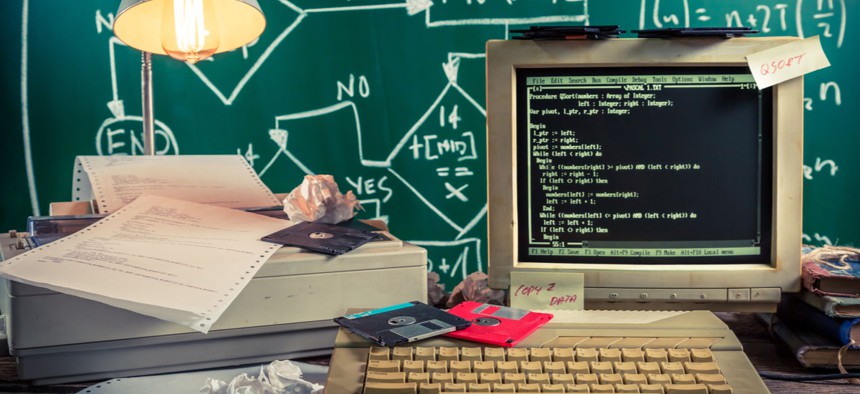Now That Most Artifacts Are Digital, Software Experts Need to Play Archeologist

Shaiith/Shutterstock.com
"Software powers business, it powers government, it powers culture."
We remember our history through objects.
We see the Gutenberg Bible and recall the revolution of the printing press, we see the hand-scrawled lyrics of “Strawberry Fields Forever” and appreciate the Beatles sensation. But more and more our cultural artifacts are now digital, and they are built on top of obsolete software, websites, and operating systems. A notable author’s drafts may be written in an early word-processing program, an iconic building design is created in an architectural software program. Thus researchers are seeking new ways to preserve history by preserving old digital objects.
Yale University Library announced a $1 million project Feb. 13 to resurrect over 3,000 obsolete software applications used in the sciences, design, engineering, and music composition, among other fields. Funded by grants from the Andrew W. Mellon and the Alfred P. Sloan foundations, Yale seeks to make opening an old word-processing file as easy as opening a book.
“Software powers business, it powers government, it powers culture. It powers pretty much anything that you can think of, and it’s been doing that for a long time,” Seth Anderson, the project manager, told Quartz. Prior to this project, “we haven’t had effective strategies for making [obsolete] software accessible.”
To open an obsolete software file, you need to open the software program in its compatible operating system. Just as you can’t run Microsoft Office for Windows on a Mac, neither can you run Word for Windows 98 on a Windows 10 machine. You would need emulation software to mimic the Windows 98 operating system on Windows 10—think Parallels for Mac, which lets you run Windows on a Mac.
Based on this idea, Yale’s digital preservationists are building a shareable “emulation as a service” infrastructure that will make it easy for anyone to remotely access the resources in the library’s digital archive. Instead of needing to set up an emulator on a specific computer, “a few clicks in your web browser will allow users to open files containing data that would otherwise be lost or corrupted,” said Euan Cochrane, the library’s digital preservation manager and the project’s principle investigator.
The project is scheduled for completion in June of 2020. For its initial phase, the service will be restricted to university members seeking resources for their coursework and research projects. As the project matures, the researchers hope that their preservation techniques will be replicated by other institutions to make digital information more accessible to the public.





